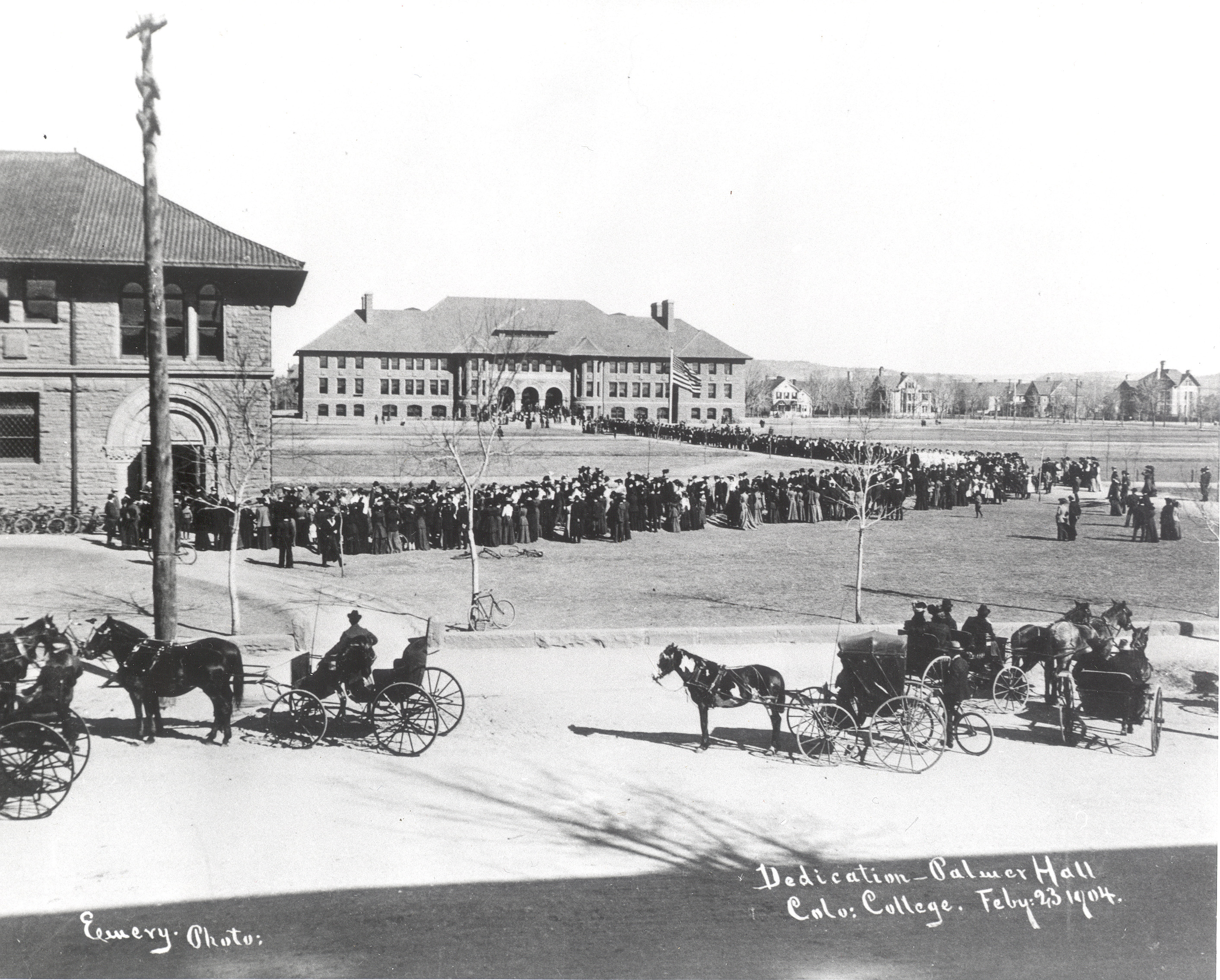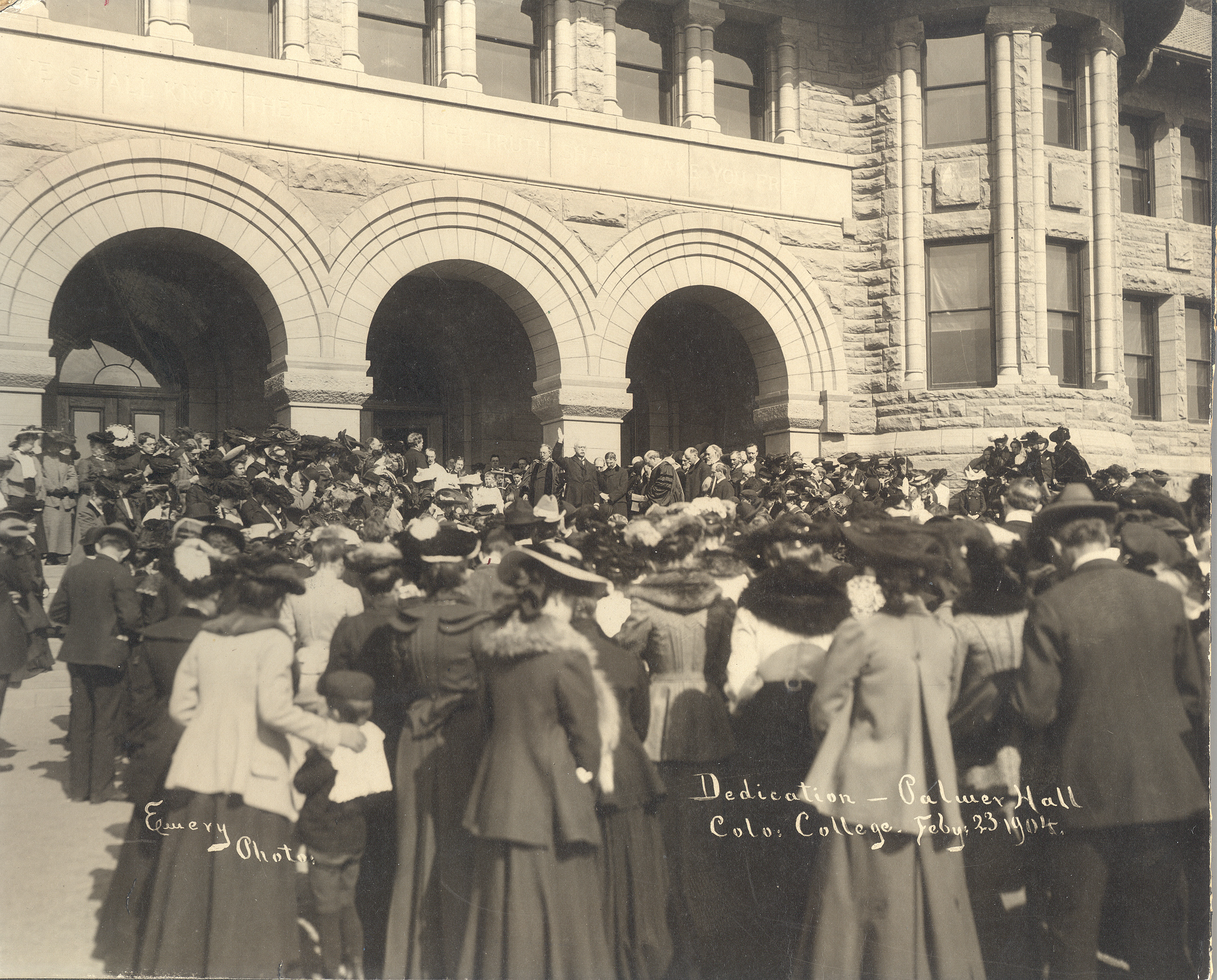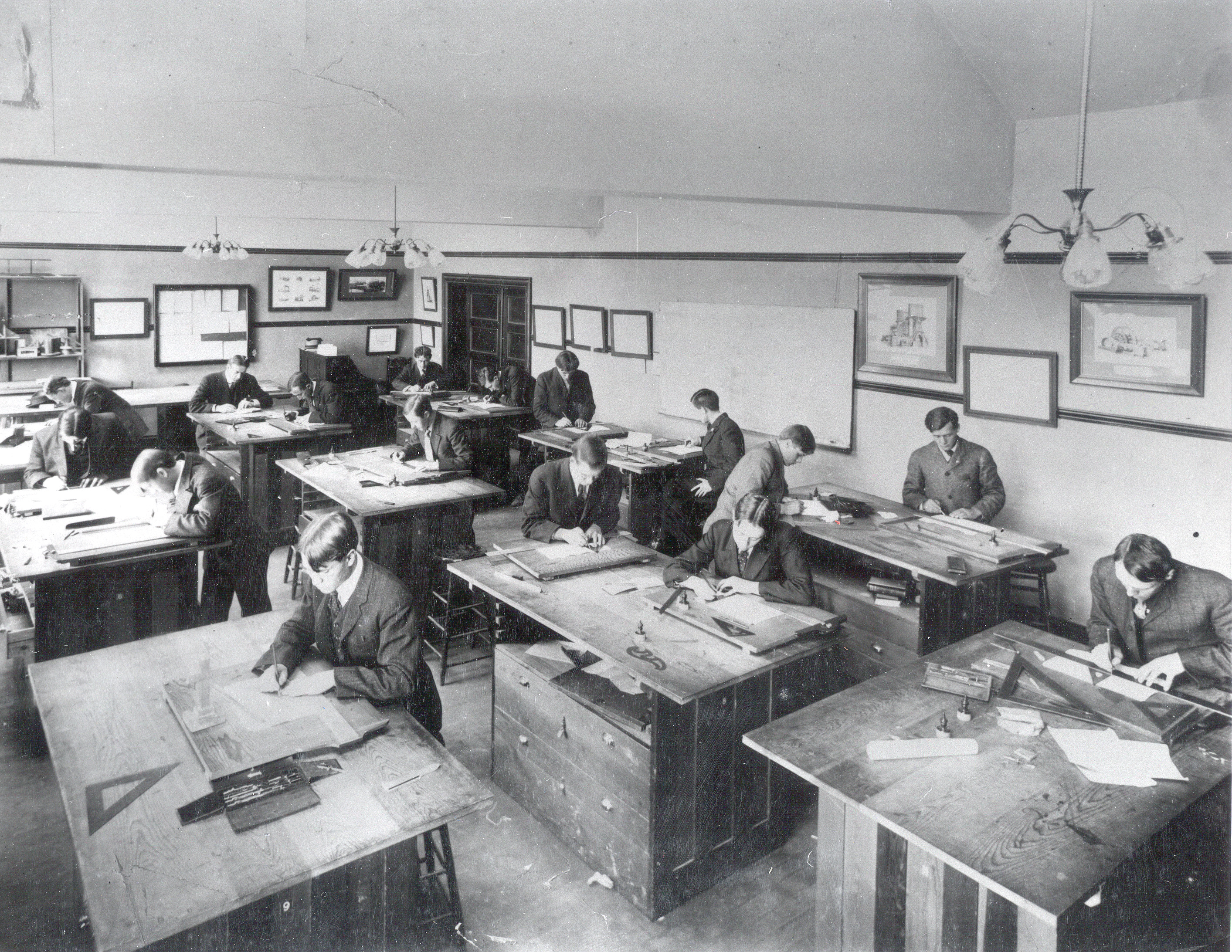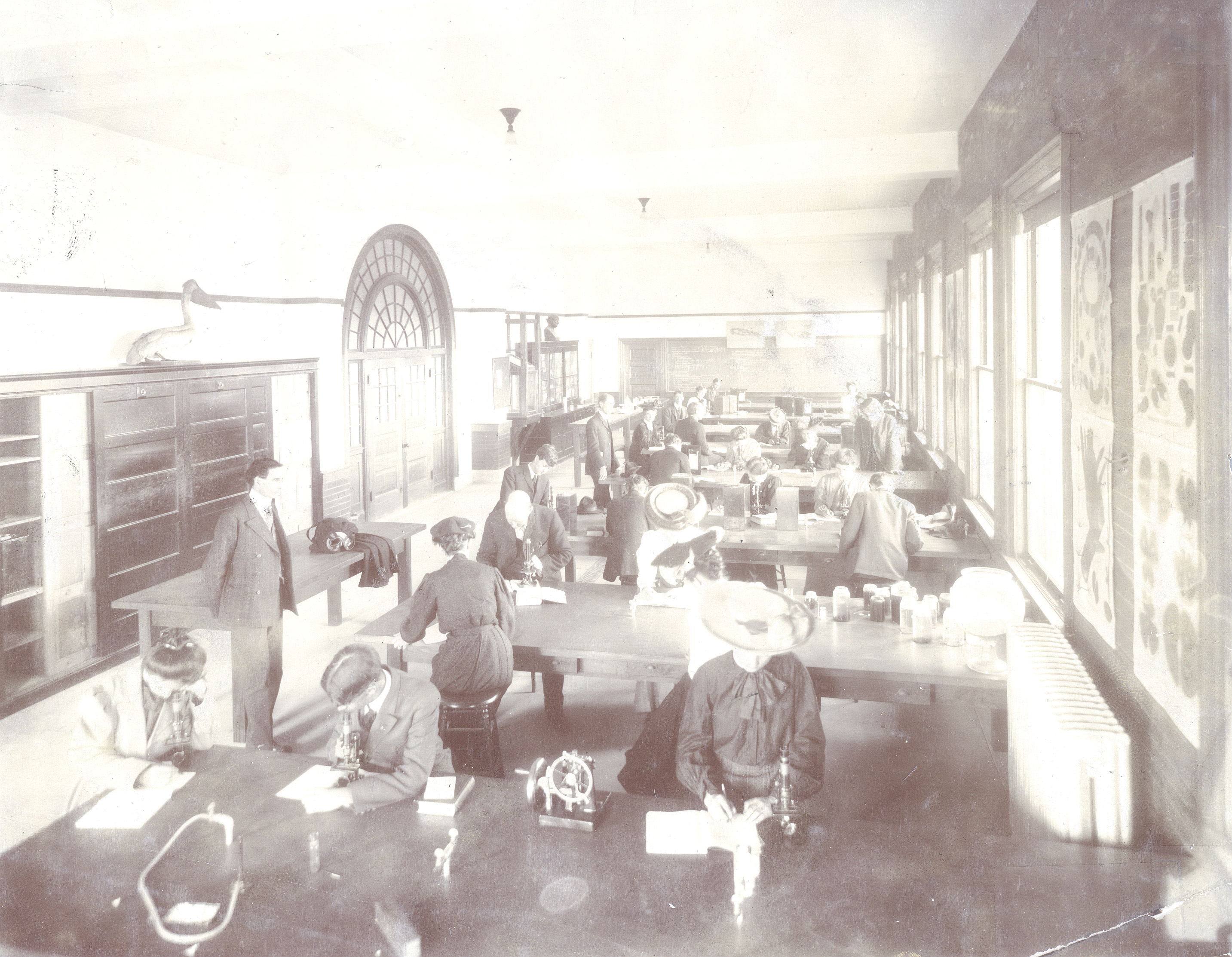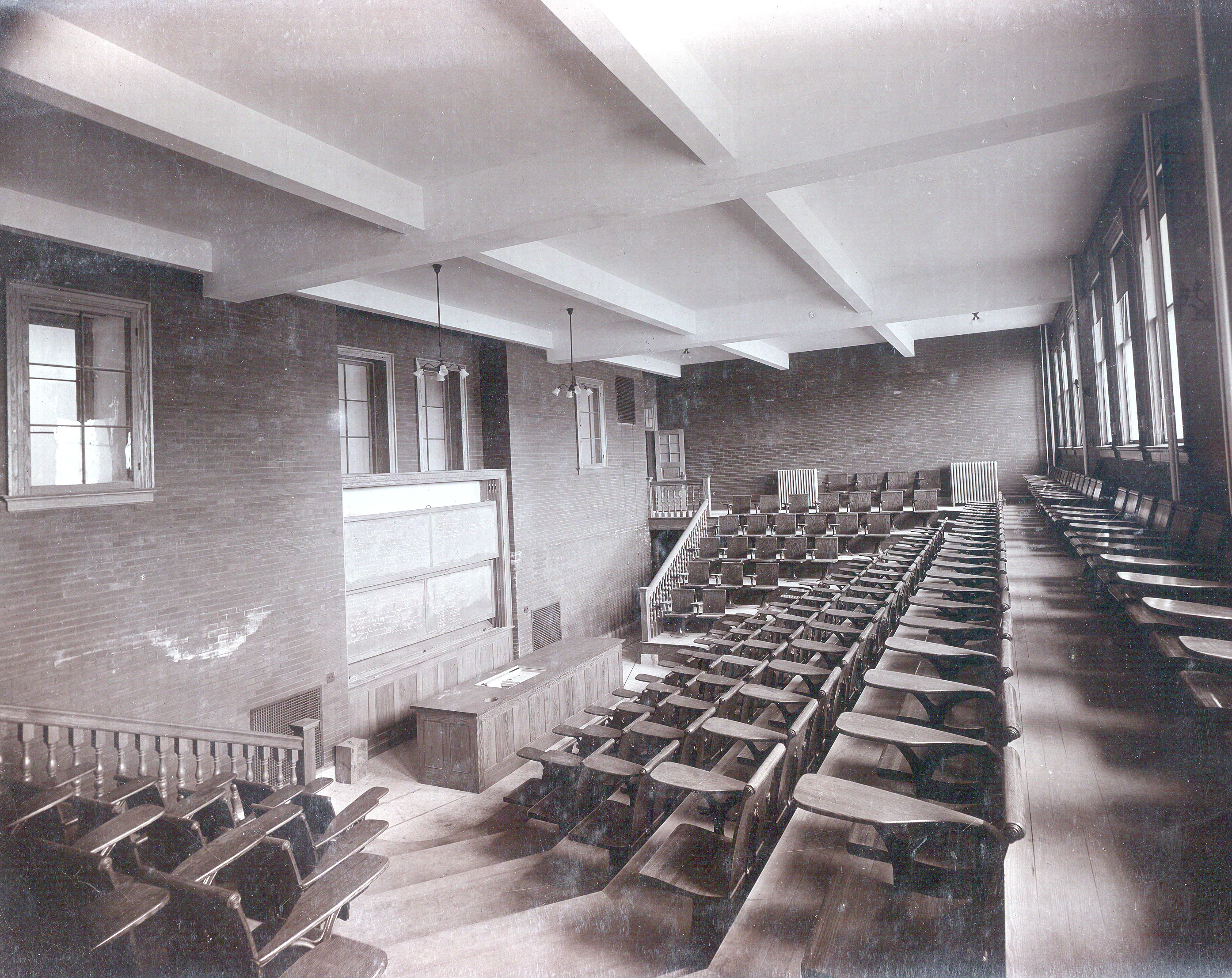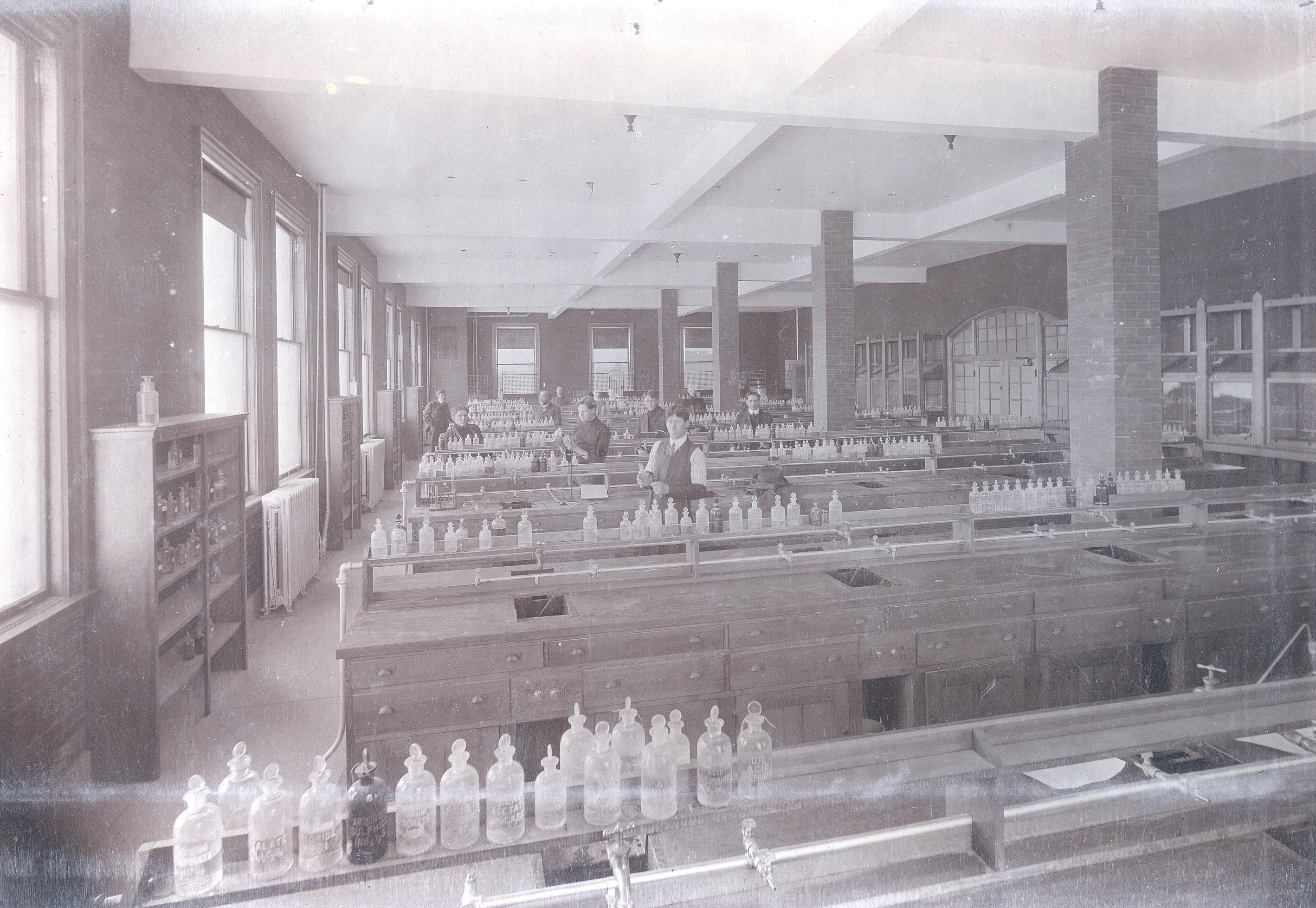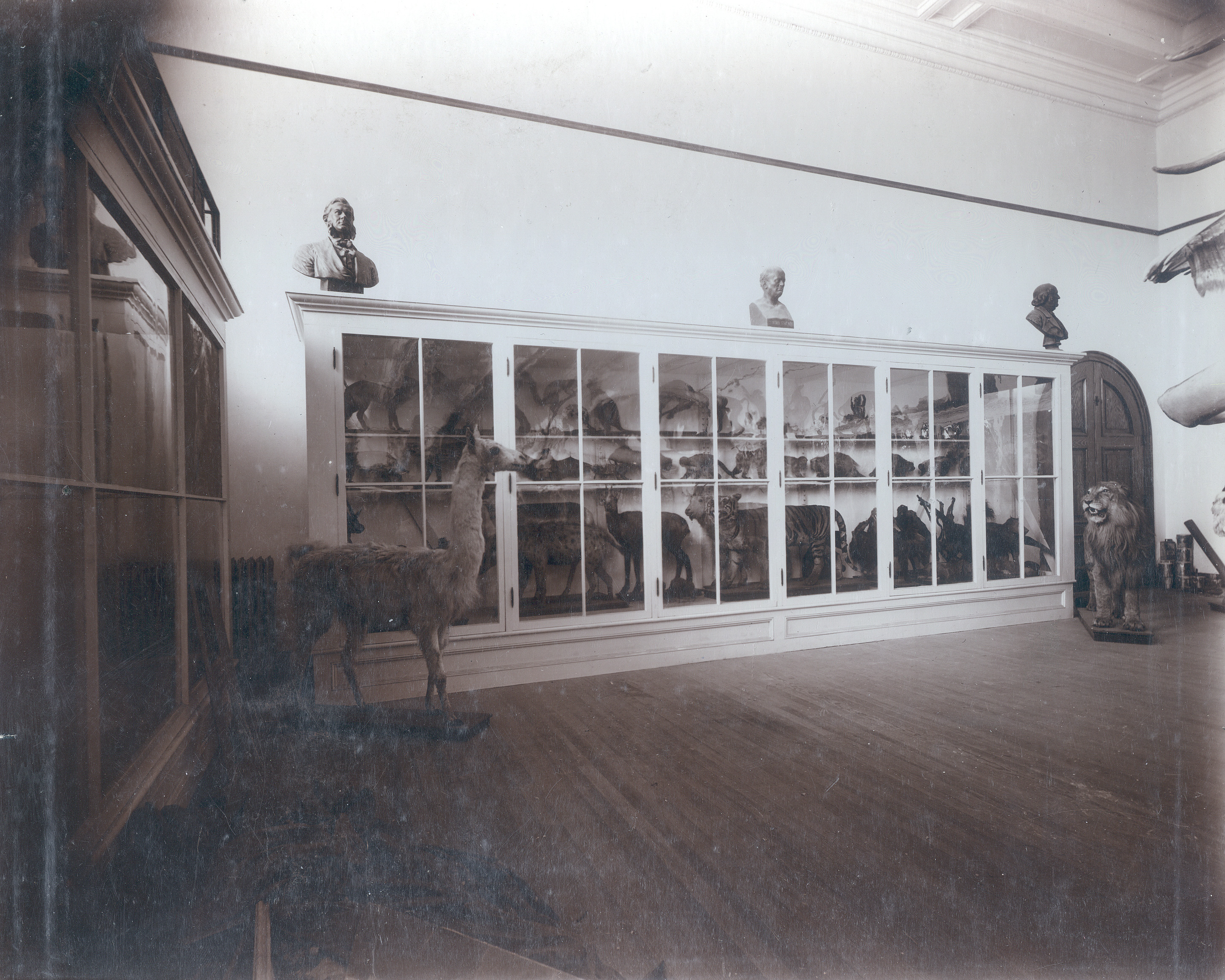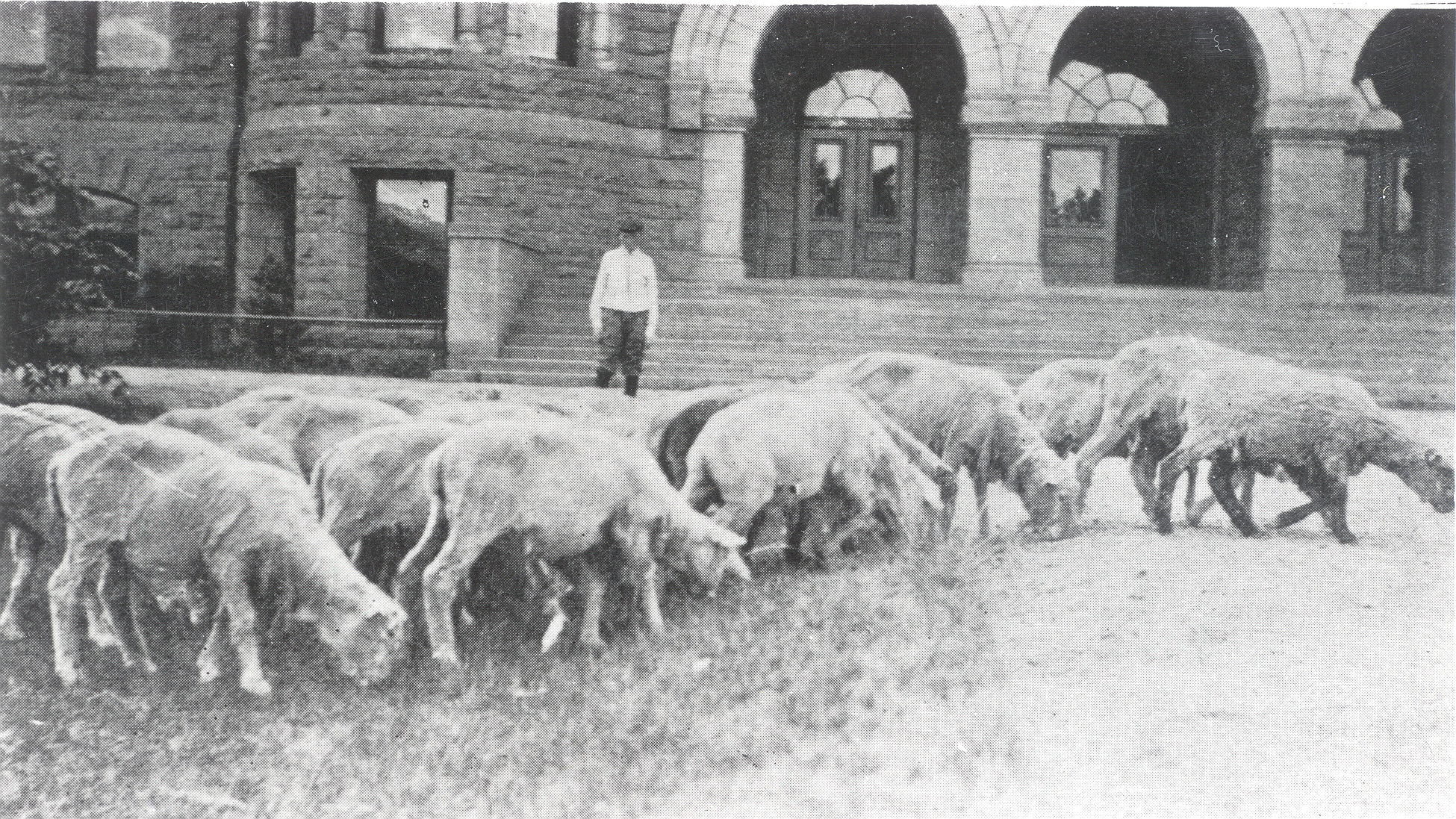Palmer Hall
Tour Stop: #8
Current and Historic Name: Palmer Hall
Address: 116 E. San Rafael Street
Year Completed: 1904
Architectural Style: Romanesque Revival
Architect: Andrews, Jacques, and Rantoul, Boston
Designation: National Register
Access Level: Palmer Hall is an academic building. The public is invited inside, but we ask that ongoing classes and activities not be disturbed.
The completion of Palmer Hall in 1904 marked the crowning achievement of President William F. Slocum's 1888-1917 construction-filled tenure and provided the campus with one of its best-loved landmarks. The nationally prominent Boston architectural firm of Andrews, Jacques, and Rantoul designed the Romanesque Revival style building utilizing beautiful peachblow sandstone from a quarry on the Frying Pan River in Pitkin County. The college utilized the highly-prized stone for several of its early buildings, of which only Palmer Hall remains today. College historian Robert D. Loevy judged that the construction of Palmer Hall "was a major symbolic event in the history of Colorado College. . . . and its great mass indicated that the builders of the College planned for their institution to be around for many years to come." Thousands of students have passed through the arches of the central entrance and been inspired by the carved inscription overhead: "Ye shall know the truth and the truth shall make you free."
President Slocum first pointed to the "crying need" for a science building at an 1897 meeting of the board of trustees. From its beginning, the college's Rocky Mountain location stimulated demand for coursework related to mining, construction, and the natural sciences. By the late 1890s student enrollment reached nearly 250 and it became increasingly difficult to find adequate space for science laboratories and classrooms. A fundraising drive to construct a new building for science and administrative offices drew large donations from Colorado Springs founder William Jackson Palmer, Chicago philanthropist D.K. Pearsons, and local mining magnate Winfield Scott Stratton. College trustees planned to erect the new building north of Coburn Library and Perkins Hall (both no longer standing) at the southeast corner of North Cascade Avenue and San Rafael Street.
Several years of fundraising ensued to gather the necessary pledges of more than $200,000 for the building. Before the college could amass sufficient funds to proceed with construction, the local street railway company owned by Stratton petitioned the college trustees for the right to extend its tracks along the Tejon Street alignment through the center of campus. The college refused, and an effort by Stratton's company to condemn the land was rejected by the Colorado Springs City Council after President Slocum pointed out that Palmer's original deed for the campus site specified the land could only be used for educational purposes. The street railway was forced to take a less direct route northward from downtown. The construction fund then received an anonymous donation of $100,000, given with the proviso that the new science building be placed further eastward, across the extended alignment of Tejon Street. Thus, the chosen site for Palmer Hall forestalled future efforts to open Tejon Street through the campus. It is generally believed Palmer and his friend, philanthropist George F. Peabody, provided the large gift. Although Stratton had been a generous benefactor to the college, it was rumored the millionaire removed a large bequest for the institution from his will after this incident.
This Building
in History:
Palmer Hall has been home to the mathematics department since its dedication in 1904. It was President Slocum's vision that brought the science building from conception in 1897, when the college had about 250 students and seven buildings, to completion in 1903. Although it did house the sciences, there were also rooms designated for Latin, Greek, Philosophy, French, German, and English.
Weeds were actually growing on the campus when Benezet arrived to take charge in the summer of 1955.
He interested himself in the western pioneer trails over which he traveled gathering notes and reminiscences of the pioneers still living.
Construction of the science building began in late 1901, the cornerstone was laid on 2 March 1902, and the building opened in 1904.President Slocum determined that the same peachblow sandstone used to construct Hagerman Hall and the Perkins Fine Arts Building would be used for the new structure. However, while Slocum was on a leave of absence in June 1902, Acting President Edward S. Parsons found that a sufficient quantity of the stone was not available and ordered substitution of Greenlee sandstone for the building. When Slocum returned, he reversed Parsons' decision and secured the peachblow product. The Greenlee stone did not go to waste; McGregor Hall was erected with that stone in 1903.
The dedication of the new building on 23 February 1904 drew representatives from more than 50 colleges and universities, Governor James Peabody, General Palmer, and the entire student body, faculty, and staff. Designated "Palmer Hall," the building's name honored William Jackson Palmer, founder of Colorado Springs, Civil War veteran, president of the Denver and Rio Grande Railroad, and longtime friend of the college. Further evidence of Palmer's importance to the institution is found inside the building, which displays a large oil portrait of the General by Hubert von Herkomer and a 1928 bas relief plaque by Evelyn Beatrice Longman. Longman's work depicts the seated Palmer with one of his dogs. Students traditionally rub the dog's nose for luck before exams.
Completed at a cost of nearly $285,000, Palmer Hall was six times more expensive than any preceding structure. The largest building on campus at the time it opened, Palmer extends 287' east-to-west and 95' north-to-south, with two stories, a raised basement, and a subbasement. The fireproof construction includes a steel frame, red brick interior walls, and concrete floors covered with terrazzo.
Palmer originally housed classrooms, scientific laboratories, and faculty and administrative offices. The chemistry, biology, physics, and geology departments moved into the building. Edward J. Hoff, a former instructor at the University of Innsbruck,designed and constructed much of the equipment for the laboratories. The cutting-edge lecture rooms featured lantern slide projectors and demonstration tables that moved from adjacent preparation rooms on iron rails. A large demonstration hall and lecture room known as "the pit" had raked seating for 160 students in "Columbia University" style chairs.
Collections of scientific specimens for display in exhibits or study by students were considered essential components of higher education by the late 19th century, and Colorado College had established its own museum in its first building. The facility created for the natural history collections in Palmer boasted a 125' X 60' room with a 56' whale skeleton suspended from the high ceiling. The museum, illuminated by large arched windows, housed zoology specimens, including two large collections of rare birds, mineral and fossil samples, and, later, examples of Southwestern pottery collected by William W. Postlethwaite. W.S. Stratton purchased a $33,000 natural history collection from a California museum for the college before the streetcar controversy. General Palmer gave 8,000 paleontological specimens, and A.E. Carlton donated his choice gold samples from Cripple Creek. T.D.A. Cockerell, a zoologist with experience at the British Museum, took charge of the museum. By 1905, more than 16,000 items were on display. On a few occasions beginning in the 1920s, students amused themselves and protested against administrators' decisions by removing the stuffed animals from the museum and placing them around campus.
The science departments remained in Palmer until the completion of Olin Hall in 1962. Since then, Palmer Hall has housed social science departments primarily. In May 1970, the building was the site of a "teach-in" on the Vietnam War following the U.S. invasion of Cambodia and the shooting of five students by National Guardsman at Kent State University. In 1977, an extensive remodeling to refurbish Palmer created smaller classrooms more compatible with Block Plan classes. The remodeling preserved the historic character while reducing the laboratory atmosphere. At about the same time, the college decided to discontinue the museum and it dispersed the collections to other institutions across the country. The Denver Museum of Natural History received the whale skeleton. The museum space became the Gates Common Room, a place for faculty and administrators to interact and a venue for lectures, receptions, and catered meals. In 1986, recognition of Palmer Hall's historical and architectural significance resulted in its listing in the National Register of Historic Places. Palmer Hall underwent major interior renovation in 2004 in honor of its centennial anniversary.



